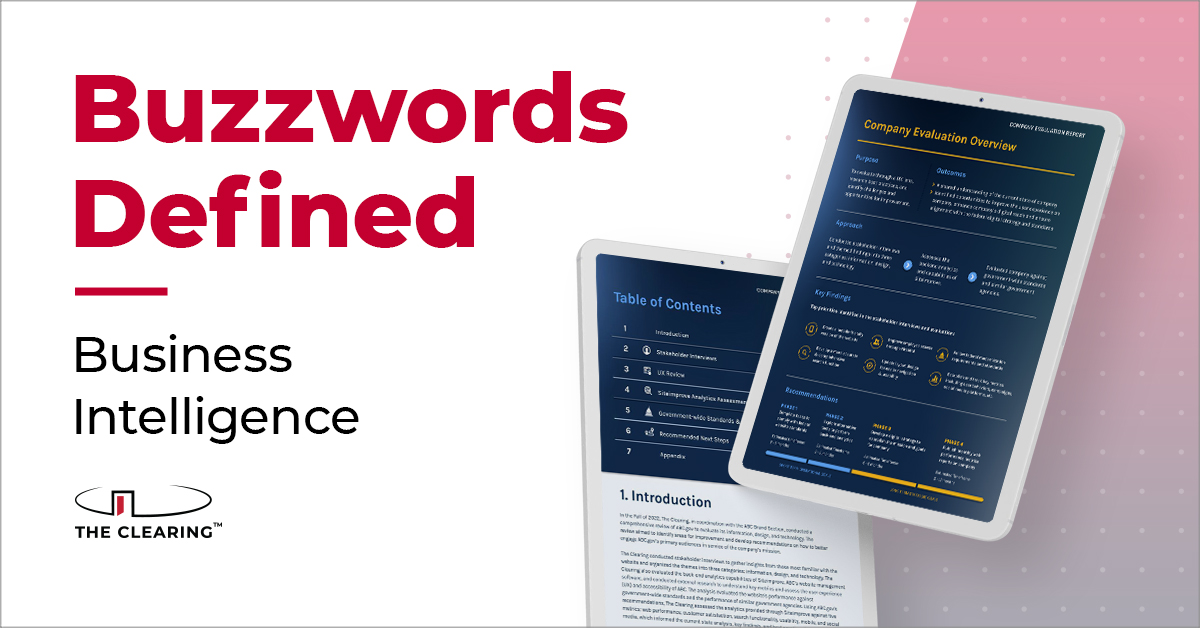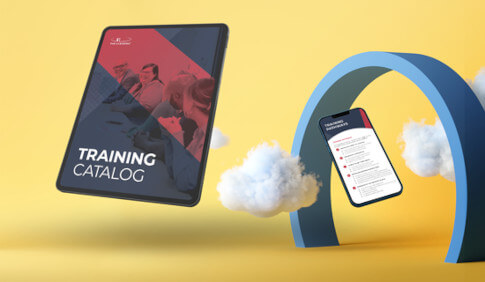Data Analyst Julia Smadja spends her days gathering insights that help both The Clearing’s leadership and our clients make more confident decisions. We call it Business Intelligence. Here’s what it means and how you can use it to benefit your organization.
Level-Set: Defining Business Intelligence
Business Intelligence (BI) is the use of technologies and processes to analyze data and reveal insights that help leaders make strategic, data-informed decisions.
How Organizations Leverage BI
Let’s use The Clearing as an example. Our Business Intelligence Team delivers data-driven insights to our leadership team, which helps them make decisions around budgeting, people resourcing, and strategic direction. In short, smart BI use removes some of the guesswork in forecasting by surfacing historical data and emerging trends.
The Positive Impact of Leveraging BI
First, BI empowers leaders to be more confident in their decisions. Second, it can speed up the decision-making process by providing immediate and continuing access to accurate and evolving information that in the past would have taken significantly more to gather and analyze. With BI, for instance, you can know exactly what you spent in previous years, exactly how many hours specific engagements took, and exactly how many people it took to complete a certain project. In sum, BI simply reduces operational noise (i.e., the pressures and second-guessing that come with relying on opinions and assumptions) and enables better business outcomes, including deeper market insights, improved efficiencies, and better talent management.
Tips for Leaders Ready to Begin
- Step into a data mindset. At its core, BI is the effective use of data. So, when you are standing up a BI program, focus on the business needs and the questions you need answered, and review the data you currently have and what you want to achieve with it. Here is a series of questions I like to ask myself.
- What questions do we need to answer?
- Can we answer those questions with the data we have available?
- If not, is it possible to collect that data?
- How can I best visualize the data for clarity of insight?
- What steps can I automate in the collection and display process?
Then, rinse, repeat, and verify with stakeholders who will be using the BI produced that it is providing what we intend: more confident and actionable decision-making.
- Be the tide, not the wave. You are in a data mindset, asking the right questions, and using data to produce specific insights. Typically, this means you are producing reports or dashboards that elegantly display the BI you are gathering to your stakeholders. Now, a new BI request comes in from a different stakeholder and you ask the same questions we discussed above. Depending on the answers, providing the requested intelligence may require analysis of a different data set and the production of unique reporting or dashboards.From here, it is easy to get stuck on solving all the little problems. That is why it is critical to examine requests and determine how each one rolls up to your enterprise mission. Considering each one in service of the whole allows you to determine how to best use your resources and provide actionable insights that raise all boats on a tide of business intelligence instead of waves that rock only a few.
- Get expert perspectives. As data and BI professionals, we are skilled in collecting, analyzing, and displaying data. However, we are not always fluent in the data or in the systems where the data is stored. For example, my team uses data from a CRM system, a project and accounting system, and additional sources to construct BI for The Clearing’s leaders, but we are not experts in those platforms. By asking the right questions of colleagues who have expertise in those systems, we can determine the right data to pull and how to best visualize them.
- Tools come last. You’ve probably noticed I haven’t talked about the actual tools used in the BI process. That’s because determining the data you need often determines the tools you’ll use to collect, analyze and display it. Tools can vary from Excel to Tableau to XYZ. There is no single business intelligence tool that trumps all others, so don’t fall for shiny objects. It is truly a matter of finding the best tool for each particular job.
If you would like to know more about how your leadership team can better leverage data to inform decision-making, we can help. Please contact me at Julia.smadja@theclearing.com – I would love to chat.






 The Clearing’s Employee Experience
Improvement model, adapted from Itam
& Ghosh, 2020, focuses on three objectives:
The Clearing’s Employee Experience
Improvement model, adapted from Itam
& Ghosh, 2020, focuses on three objectives: 














